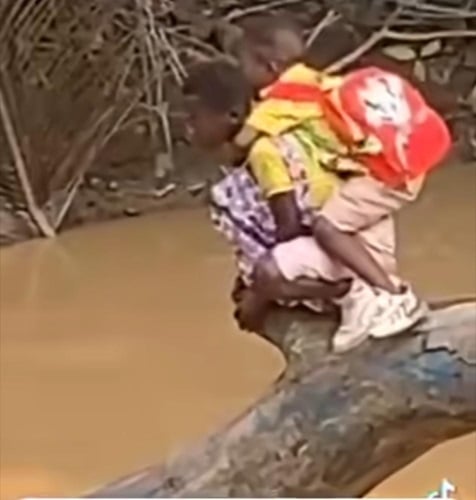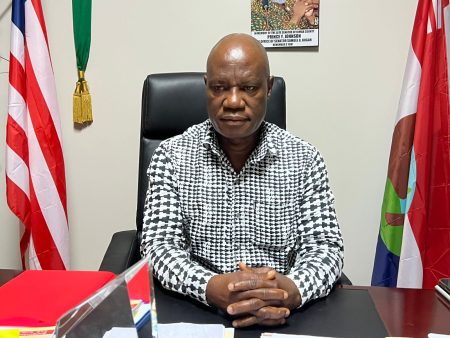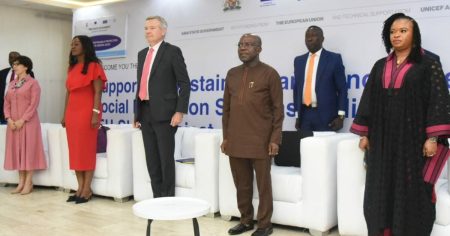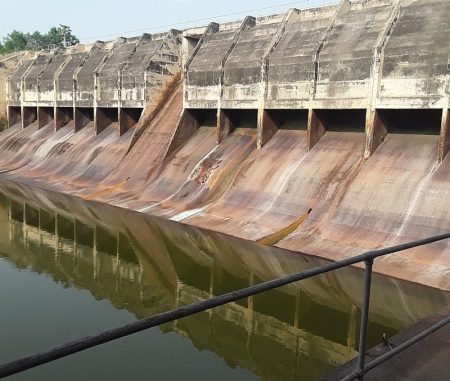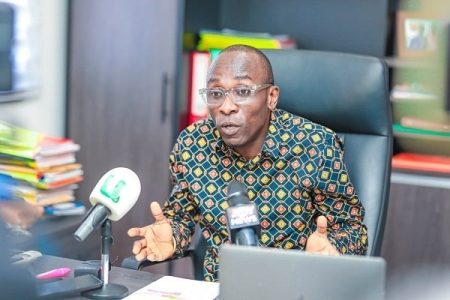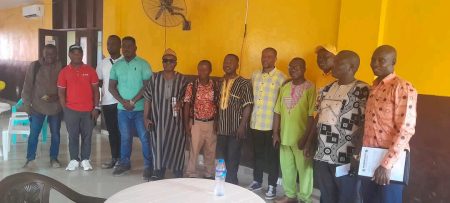The urgent call for a comprehensive risk assessment for basic school students in Ghana, particularly those in rural areas, highlights a critical gap in the nation’s educational infrastructure and its potential impact on children’s safety and access to education. Dr. Banabas Addai Amanfo, a senior lecturer at Akenten Appiah-Menka University of Skills Training and Entrepreneurial Development (AAMUSTED), emphasizes the need for this assessment, particularly focusing on students in underserved rural communities who face significant challenges in accessing basic necessities like education, healthcare, and even food, often due to inadequate infrastructure and resources. His plea underscores the vulnerability of these children and the urgent need for proactive measures to mitigate the risks they face.
The catalyst for this call to action was a poignant visual representation of the challenges faced by rural students: a viral video clip depicting a schoolboy carrying another on his back across a precarious fallen tree bridging a stream in Asuokow, Eastern Region. This compelling image exposed the perilous journeys many children undertake daily to access education, highlighting the urgent need for safer infrastructure. The video prompted President John Dramani Mahama to order the Ghana Armed Forces engineers to construct a bridge over the stream, offering immediate relief to the students in Asuokow. However, Dr. Amanfo points out that this single incident represents a larger, systemic issue affecting countless other children in similar situations across the country.
Dr. Amanfo’s appeal extends beyond the immediate need for bridges and safe passage to school. He emphasizes the importance of a comprehensive risk assessment to identify and address the multifaceted challenges faced by students in rural areas. These challenges often go beyond physical risks, encompassing issues such as limited access to quality healthcare, nutritional deficiencies due to food insecurity, and the overall impact of poverty on their educational attainment. These factors combine to create a complex web of disadvantage that hinders the development and well-being of rural children.
The lack of adequate infrastructure in rural areas creates a ripple effect that negatively impacts various aspects of children’s lives. Poor road networks and the absence of safe crossings over rivers and streams not only pose safety risks but also contribute to absenteeism and reduced learning opportunities. Children are often forced to miss school during rainy seasons or when river levels rise, disrupting their education and widening the gap between them and their urban counterparts. Furthermore, the lack of accessible healthcare facilities hinders timely medical interventions, leading to preventable illnesses and potentially long-term health complications. This further exacerbates the challenges faced by rural students, impacting their ability to attend school and thrive academically.
The call for a risk assessment is not merely a reactive measure to isolated incidents; it’s a proactive strategy to identify and mitigate potential hazards before they escalate into tragedies or further perpetuate the cycle of disadvantage. A comprehensive assessment would involve systematically evaluating the physical environment of schools and surrounding communities, identifying potential hazards such as unsafe buildings, inadequate sanitation facilities, and environmental risks. It would also consider socio-economic factors that contribute to vulnerabilities, such as poverty, malnutrition, and lack of access to healthcare. By comprehensively mapping these risks, policymakers and educational authorities can develop targeted interventions to address the specific needs of each community.
Implementing a risk assessment framework requires a multi-pronged approach, involving collaboration between government agencies, educational institutions, local communities, and NGOs. This collaborative effort would ensure that the assessment is not just a bureaucratic exercise but a meaningful process that translates into tangible improvements in the lives of rural students. It would involve engaging with local communities to understand their unique challenges and incorporating their insights into the assessment process. Furthermore, the assessment should not be a one-time event but an ongoing process that is regularly reviewed and updated to reflect changing circumstances and emerging risks. This continuous monitoring and evaluation would ensure that the measures implemented remain effective and relevant to the needs of the students. By prioritizing the safety and well-being of rural students and investing in the necessary infrastructure and resources, Ghana can create a more equitable and inclusive education system that empowers all children to reach their full potential.





